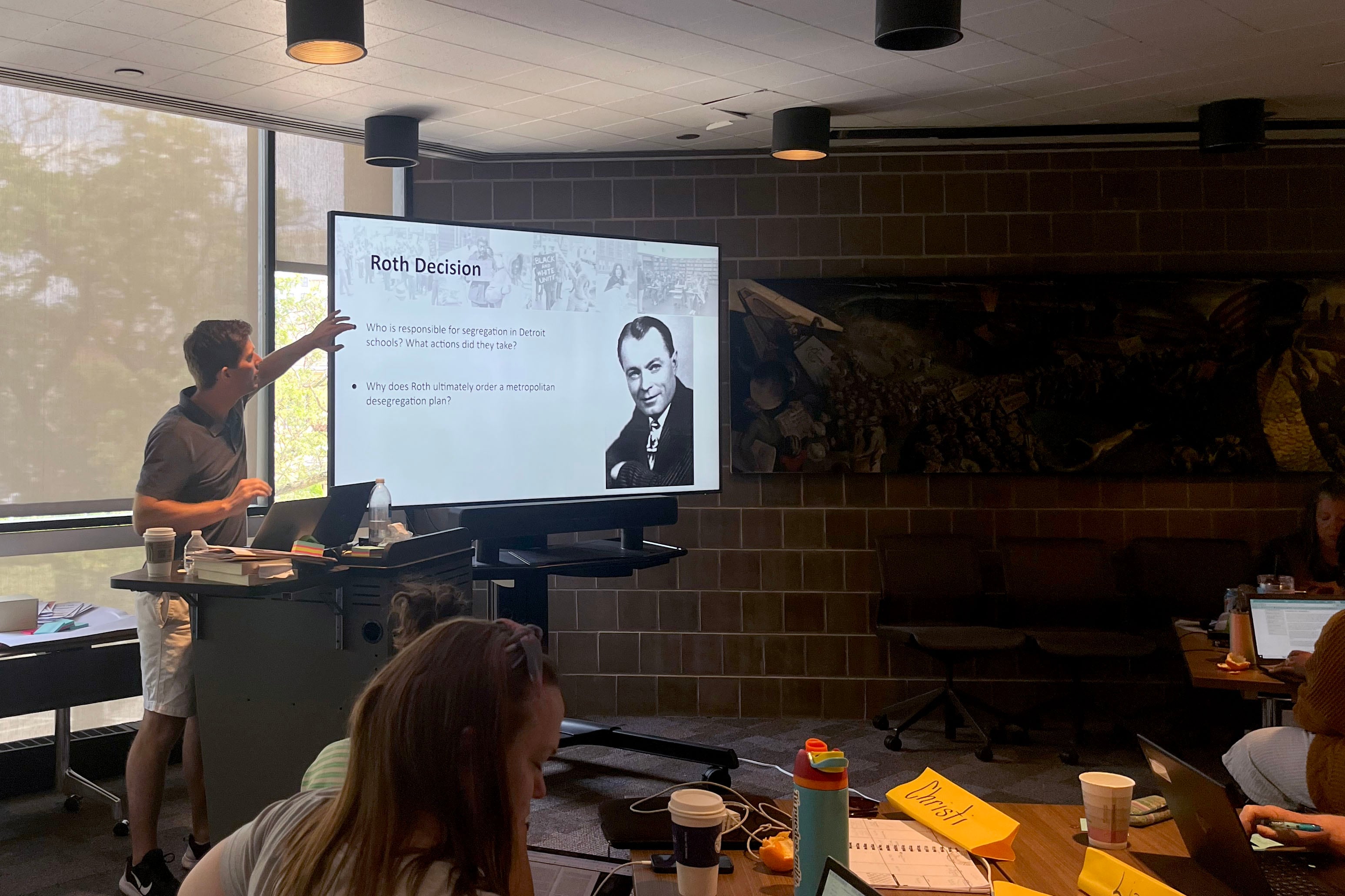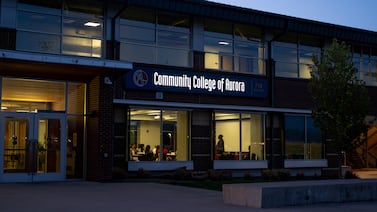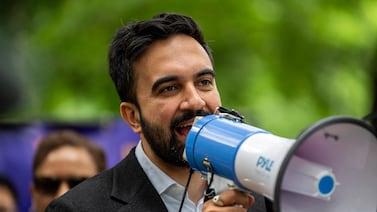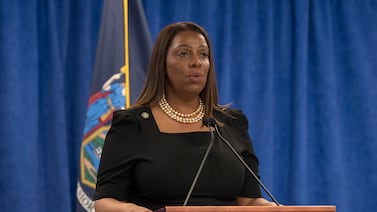Most of Alisha Washington-Hutton’s history students are familiar with Brown v. Board of Education, the landmark U.S. Supreme Court ruling in 1954 that ended state-sanctioned racial segregation in schools.
But few of them know about another decision by the court in a case closer to home that has affected integration efforts in metro Detroit for years.
That’s why she attended a two week institute, Democracy in Education: A View from Detroit, at the Walter P. Reuther Library. The program is giving her tools to teach her students in Royal Oak Schools about Milliken v. Bradley, a case 20 years later that ended plans for cross-district busing to integrate Detroit and suburban schools.
“I’m going to consider the long history of education and Black people’s fight for education. So we often think about Brown v. Board as the end of desegregation, but instead bringing to my kids these slightly more complicated stories I think will be to everybody’s benefit,” said Washington-Hutton, a teacher at Royal Oak Middle School.
She’s among 22 teachers from across the country who gathered at the Reuther library for the two-week program funded by the National Endowment for the Humanities. Discussions on Tuesday centered on the events leading up to Milliken v. Bradley and its long-term implications for school segregation. This year marks the 50th anniversary of the Supreme Court decision.
The historic case began when the NAACP filed a lawsuit against the state of Michigan on behalf of then-elementary school student Ronald Bradley. In 1972, U.S. District Judge Stephen Roth ordered 53 school districts, including Detroit, to create a cross-district plan to bus thousands of Black children to suburban schools, and thousands of white children to Detroit schools.
In 1974, the Supreme Court ruled 5-4 against the plan. Detroit then had to implement its own districtwide desegregation plan.
Thurgood Marshall, the only Black justice on the court at the time, said Detroit could not integrate its schools without working with the suburbs, as white residents fled the city and its demographics shifted to predominantly Black.
Washington-Hutton wanted to better understand the historical context behind the demographic differences between her district, which is largely white, and the Detroit Public Schools Community District, which is predominantly Black.
People often assume segregated schools or neighborhoods “happened organically,” she said. But people often make choices to segregate or integrate.
“Oftentimes when we can kind of just assume that it’s a natural thing, people just decide where to live, just based on, you know, they like the area, it hides a little bit of the structural racism that can go into the makeup of our schools,” Washington-Hutton said.
Inspired by the 50th anniversary of the case, Matthew Kautz, a professor at Eastern Michigan University, worked with his colleagues to form the institute. They wanted to engage educators from across the country in rigorous study of the legal history of school segregation, systemic oppression, and resistance.
Attendants first listened to Rev. Dan Aldridge, a veteran activist, discuss his experiences organizing for community control of Black schools in Detroit and New York. Kautz then walked educators through the history of desegregation efforts in Detroit and across the country that led up to Milliken v. Bradley.
Attendants then watched a documentary-in-progress by Donovan McCarty, a filmmaker and attorney at the Detroit Justice Center. They wrapped up the day with a discussion about the legacy of white flight and failed efforts to integrate city and suburban schools in metro Detroit.
“We wanted folks to be able to think within this institute and then take back to their students how to think about the complicated dynamics of schooling, education, race, and democracy,” Kautz said. “How do we work with students to make sense of that, given these are the places where they learn, and this is the world that we’re asking them to inherit and make sense of.”
Michele Smiley, who teaches U.S. history and African American History and Culture at Plymouth-Canton Educational Park, hopes to apply what she has learned to the curriculum. She already teaches Brown v. Board, but she said she felt there was a missing piece in her curriculum, a gap she hoped this institute would fill.
Lisa Landrum-May, who teaches high school English 10 and Advanced Placement African American Studies in Maryland, connected what she learned with her own experiences being bused to a predominantly white school as a Black kid in Charlotte, North Carolina, in the 1970s.
She remembers people telling her it was a great opportunity for her, but the experience harmed her. She did not feel like white parents and teachers wanted her there.
“This impacted my life for 50 years,” Landrum-May said.
At her old school, where all the faculty was Black, she recalls the teachers treating the children like their own. But things changed when she was bused a lengthy distance out of her neighborhood to a white school.
The new school had more resources, but her first teacher there tried to segregate Black and white students in the classroom and made her feel like she did not have the skills necessary to do well.
“They were thinking about holding me back, then they were saying maybe special ed” – where most of the Black students ended up, she said. “It affected me so deeply. I’m 58 years old, and I’m an English teacher. I’m very literate, I’m very articulate. I was afraid to read out loud up until like seven years ago.”
After hearing the impact busing had on students, Smiley already has ideas on how she will incorporate Milliken v. Bradley into her teaching. She hopes to give students a greater idea of the different opinions about solutions to the inequities caused by school segregation, particularly the push from some in the Black community for community control and equal funding instead of integration.
Tyrek Laing from Burbank, California found the opportunity to look at the connections between education and democracy appealing.
“I’m learning that even though we’re in different locations, there’s some fundamental challenges that we all face,” said Laing, a dean of student inclusion in grades 6-12 at an international private school. “Detroit has such a rich history of protest, of advocacy, and so learning the stories of people who are here and have been on the ground here throughout the years, was something that I felt like would be motivational and giving me strategy as well.”
Washington-Hutton and Smiley agreed that their favorite part of the institute has been connecting with educators from around the country and hearing their experiences. As a co-director, Kautz has appreciated the participants willingness to learn, be vulnerable, and engage with each other.
At one point, there was a moment where school integration seemed like a very real possibility,” Washington-Hutton said. “While learning all this information is great, I think part of it is really important because you learn with the Bradley case why it stops. Why we have all of this progress, progress, progress, and then we kind of just hit against the wall.”
Alex Klaus is a summer intern at Chalkbeat Detroit. You can reach her at aklaus@chalkbeat.org.






